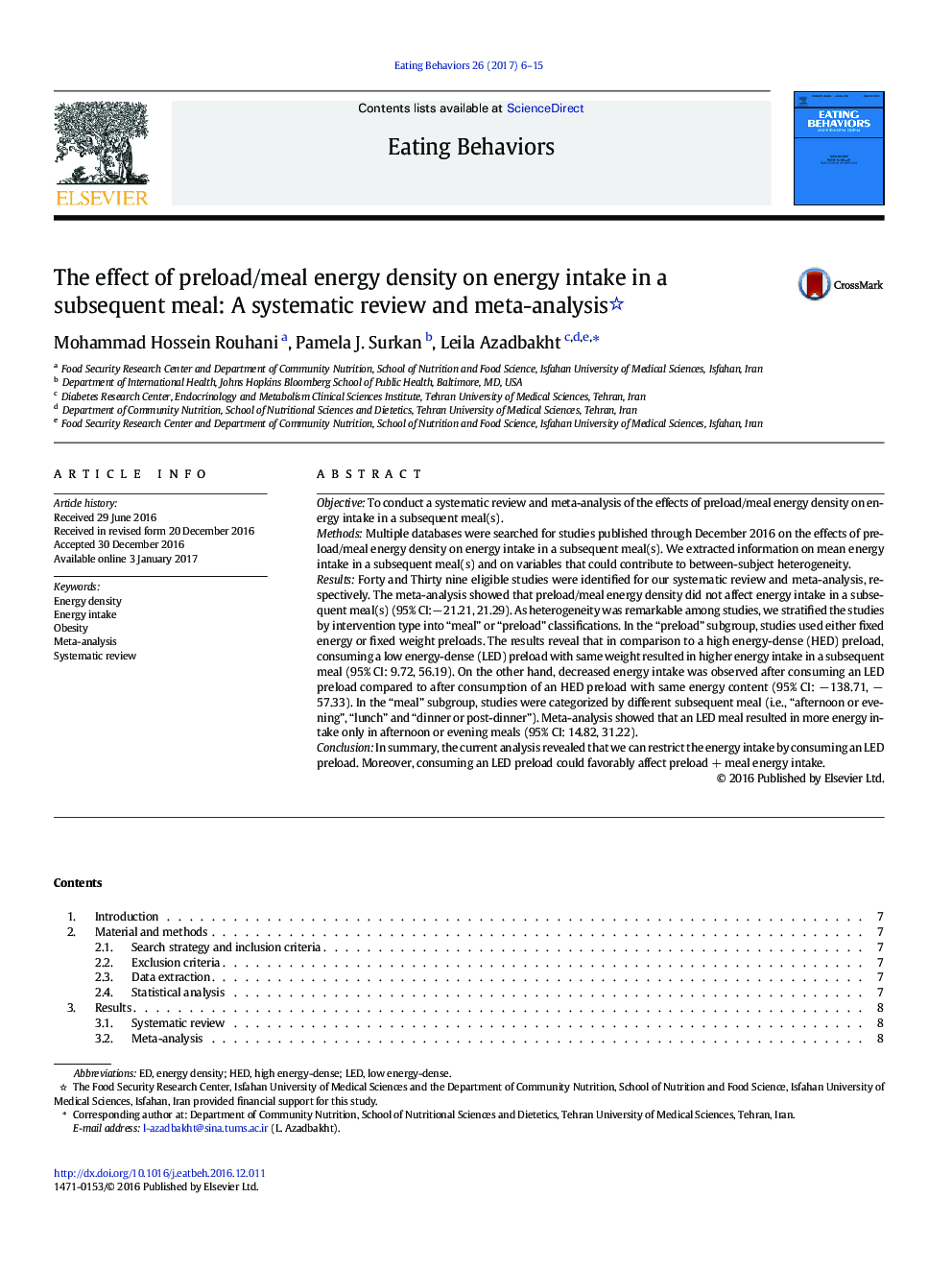| کد مقاله | کد نشریه | سال انتشار | مقاله انگلیسی | نسخه تمام متن |
|---|---|---|---|---|
| 5038785 | 1472877 | 2017 | 10 صفحه PDF | دانلود رایگان |
- Compared to a high energy-dense (HED) preload, a low energy-dense (LED) preload resulted in higher subsequent energy intake.
- Energy intake was decreased after an LED preload compared to an HED preload with same energy content.
- In comparison with an HED preload, consuming an LED preload resulted in lower energy intake of preload + meal.
- An LED meal resulted in more energy intake only in afternoon or evening meals.
ObjectiveTo conduct a systematic review and meta-analysis of the effects of preload/meal energy density on energy intake in a subsequent meal(s).MethodsMultiple databases were searched for studies published through December 2016 on the effects of preload/meal energy density on energy intake in a subsequent meal(s). We extracted information on mean energy intake in a subsequent meal(s) and on variables that could contribute to between-subject heterogeneity.ResultsForty and Thirty nine eligible studies were identified for our systematic review and meta-analysis, respectively. The meta-analysis showed that preload/meal energy density did not affect energy intake in a subsequent meal(s) (95% CI:â 21.21, 21.29). As heterogeneity was remarkable among studies, we stratified the studies by intervention type into “meal” or “preload” classifications. In the “preload” subgroup, studies used either fixed energy or fixed weight preloads. The results reveal that in comparison to a high energy-dense (HED) preload, consuming a low energy-dense (LED) preload with same weight resulted in higher energy intake in a subsequent meal (95% CI: 9.72, 56.19). On the other hand, decreased energy intake was observed after consuming an LED preload compared to after consumption of an HED preload with same energy content (95% CI: â 138.71, â 57.33). In the “meal” subgroup, studies were categorized by different subsequent meal (i.e., “afternoon or evening”, “lunch” and “dinner or post-dinner”). Meta-analysis showed that an LED meal resulted in more energy intake only in afternoon or evening meals (95% CI: 14.82, 31.22).ConclusionIn summary, the current analysis revealed that we can restrict the energy intake by consuming an LED preload. Moreover, consuming an LED preload could favorably affect preload + meal energy intake.
Journal: Eating Behaviors - Volume 26, August 2017, Pages 6-15
